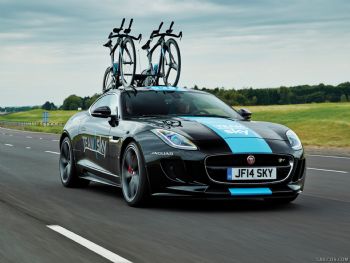
Tata-owned Jaguar designed and built a bespoke high-performance F-Type Coupé support vehicle for Team Sky to use during this year’s Tour de France.
The bespoke features included a new racking solution, which carried two of the team’s Pinarello Bolide TT bikes, and a separate electric supply in the boot that provided power to the team’s radios, amplifiers, microphones, horns and televisions.
Sir Dave Brailsford, team principal, said: “Jaguar is an iconic British brand that has been a Team Sky partner for over four years.
We have already benefitted from their high-performance credentials, their expertise in technology and their engineering innovations, particularly with the recent development of the Pinarello Dogma F8.”
Jaguar was charged with the task of giving Pinarello’s top-end bicycle frame an even better aerodynamic performance.
Working to fixed ‘hard points’ — such as wheelbase and geometry determined by Pinarello’s designers — Jaguar engineers developed the frame to improve the aerodynamics of the tube profiles and reduced the drag of components mounted to the frame.
More than 300 computational fluid dynamics (CFD) ‘virtual’ runs were carried out between October and January, using the same methods to optimise the aerodynamics of new Jaguar Land Rover road cars.
The drag of every single component was measured, and modifications could be analysed and compared. Wind-tunnel work was then used to verify the CFD tests.